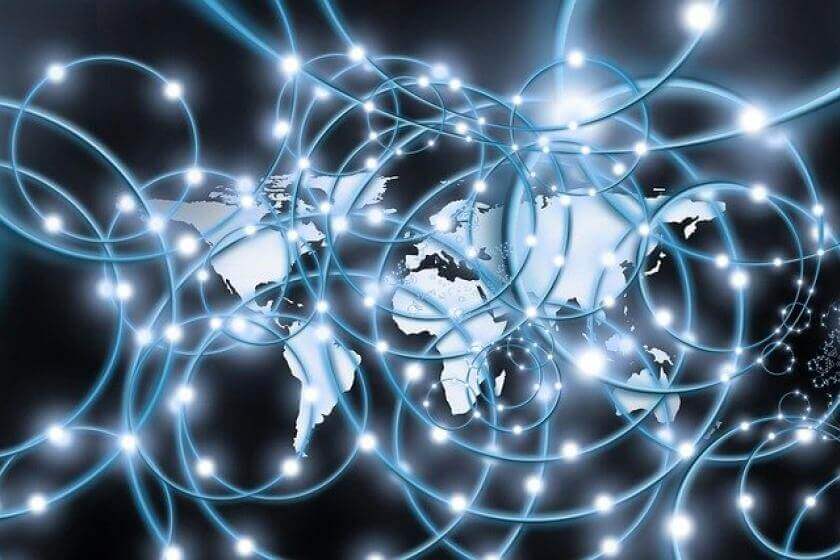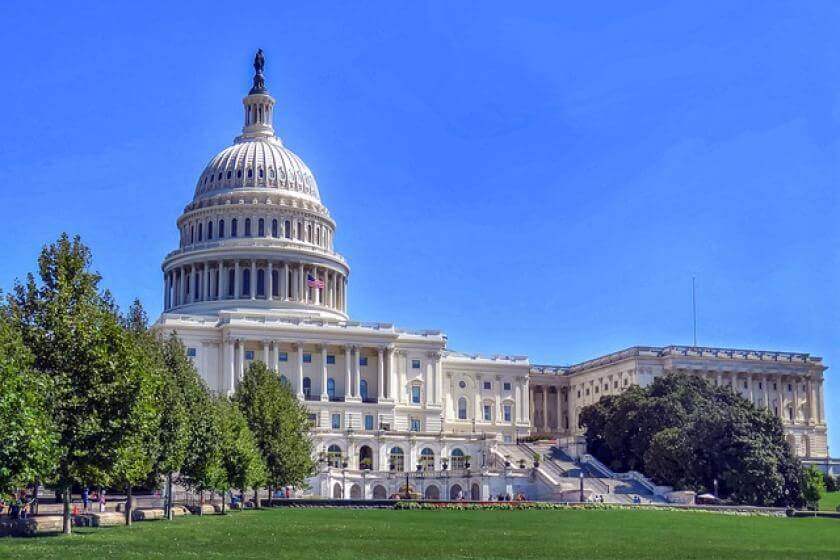Articles
Sample Articles from Bob Wallace.
Read More about Bob.
An Eight-Step Plan to Updating Your Network Disaster Recovery Plan
- Details
- Published on 21 March 2022

(Source: Pixabay)
Disaster recovery for the modern global enterprise: How to minimize the impact of cable cuts, criminal activity, and acts of God.
Planning for unexpected and unavoidable service interruptions on undersea cables, land-based networks or satellite systems is an essential undertaking for enterprise IT managers. Refreshing a backup plan need not be heavy lifting as expert guidance and a growing array of backup options are available to fortify the blueprint.
The undersea volcano which, which cut the sole Internet link to Tonga, a country of islands, last month should serve as a wakeup call for enterprise IT managers around the world to update their backup and disaster recovery plans for their network infrastructure and connected equipment.
Be it from a backhoe blunder, criminal activity or act of God, enterprises need a comprehensive B (backup) plan for locations large and small, nearby and around the world, to minimize lost productivity and business.
Map out your plan
If your carriers have not provided route maps and their backup plans for your services, press them for these assets so you can identify potential weaknesses in your plan. Just because you have carrier diversity, does not guarantee route diversity, as carriers frequently use the same conduit. If that conduit is knocked out, having multiple carriers may not matter.
Minimize fiber cut risk
“The best method to minimize any impact from fiber cuts is to either obtain a network service from a service provider that builds in a protection path by having two separate routes everywhere (in two separate conduits) or to implement one yourself by finding two service providers with different fiber routes,” explained Jimmy Yu, Vice President of the Optical Transport market at Dell’Oro Group, a research and analysis firm.
In both scenarios, if a conduit of fiber is cut, the network will re-route the company’s traffic through an alternate route, usually in a few minutes. This applies to both terrestrial and submarine networks.
This approach proved successful over a decade ago when an undersea earthquake near Japan, shook much of the country, including nuclear power plants, and cut numerous undersea fiber cables. But due to protection mechanisms in place, traffic was re-routed to the cables that were still functioning. By contrast, Tonga had a single point of failure with a single undersea connection to the Internet.
Explore multiple media options
Since fiber cuts are seen as inevitable, IT managers who have not already, need to consider wireless and satellite transmission options for use as in a backup role. If a site is within 100 km of a neighboring country, point to point microwave is a solid option, says Yu. Satellite connection can also limit losses, but both options operate at speeds far slower than are typically supported on optical transport systems.
Check new cables, new owners, and new routes
Because of the need to expand and protect cloud services connectivity and to make their data centers more resilient, Google, Microsoft and Facebook have collectively built nearly 20 of their own undersea cables, connection cities and country regions, often in new locations around the globe.
At last check, Google alone owned sixteen undersea cables. Microsoft and Facebook teamed on yet another. The good news is their services can reach new areas and provide backups to other routes they own. However, it is unlikely they will lease or sell capacity to enterprises or carriers.
Diverse cables to avoid disasters
Early on in undersea systems, the cables were owned and operated by telco consortiums, built to provide connectivity between international business hubs. Business opportunities and cable cuts helped grow the number of systems as was the case when Hurricane Sandy devastated New Jersey in October 2012, disrupting daily business for some time.
“It was a major disruption,” says Frank Rey, director of global network strategy for Microsoft’s Cloud Infrastructure and Operations division. “The entire network between North America and Europe was isolated for a number of hours. For us, the storm brought to light a potential challenge in the consolidation of transatlantic cables that all landed in New York and New Jersey.”
Look to the cloud for cable diversity
Disasters have a way of fueling progress in networking resiliency. The hurricane inspired Microsoft, Facebook, and contractor Telexius to build what, when completed in 2019, as the highest capacity subsea cable to cross the Atlantic Ocean. It connects Virginia Beach, Virginia, and Bilbao, Spain, offering a separate route from cables terminating in New Jersey.
The cable’s landing point in Spain landing provides a path to network hubs in Africa, the Middle East and Asia, and its bandwidth will help meet the increasing demand for internet and cloud services.
Check SLAs
Enterprise IT managers need to review the SLAs on their carrier connections focusing on availability as well as for recovery. “There are certainly going to be locations where the local service provider just can’t provide the SLAs some enterprises require, especially when it comes to response and repair times,’’ cautioned Jeff Heynen, Vice President, Broadband Access and Home Networking at the Dell’Oro Group.
Reviewing SLAs of other providers, where available, to determine if a change is required, and if and where dedicated backup and equipment are needed. In those cases, satellite and fixed wireless are certainly viable options for redundancy.
Consider backup equipment spending
With often tight budgets and the price of seemingly everything climbing, buying equipment to sit idle may not seem like a top priority. Some may prefer a usage-based or on demand-centric B plan. Keeping an eye on the enterprise IoT routers and gateway market could prove prudent.
“A modest percentage of those devices are used in remote locations purely as backups to the primary fixed routers and gateways,” according to Heynen, “If there are any WAN connectivity issues, the enterprise can simply divert any traffic through the wireless gateway until the fixed connection is restored. You could definitely envision satellite providing another WAN connectivity option in that situation.”
The bottom line
Avoiding or minimizing loss of business from transmission network interruptions of any type is an essential undertaking. Periodically refreshing a B plan for network connectivity can benefit enterprises if IT managers consider new and emerging opportunities for a more flexible plan.
Broadband Outlook 2022: Chip and Component Shortages Spell Trouble for Enterprise Network Expansion
- Details
- Published on 04 February 2022

(Source: Pixabay)
Demand for broadband service in unserved and underserved areas remains high, but what of the wild card: supply?
The last two years saw unprecedented initiatives designed to pour $85 billion dollars into funding and financing for a historic broadband breakout to deliver high speed Internet to unserved and underserved areas across America.
But looking to 2022, enterprise IT managers and service providers will find that money cannot yet buy them repaired and enhanced supply chains needed to eliminate sweeping shortages of everything from chips to equipment necessary for network upgrades and expansions to serve previously unreachable locations.
Despite historic levels of investment in broadband to close the Digital Divide over the coming years, the telecom industry now finds itself seeking to avert a broadband slowdown. Instead of planning for bigger broadband business, equipment makers and carriers are planning for increasing delays in addressing the needs of enterprises.
What happens to network expansion?
As a result, it appears clear that companies will spend more time waiting than planning for corporate network expansion until further notice. Supporting work from home efforts will become heavy lifting.
“I believe the biggest challenge by far for enterprise IT managers is going to be supply chain issues limiting access to certain network infrastructure and CPE,” said Jeff Heynen, Vice President, Broadband Access, and Home Networking, for market research and analysis firm Dell’Oro Group. “Lead times for components continue to increase and we are seeing its impact in the shipments of things like DOCSIS CPE, certain PON ONTs, and home networking gear.”
And while the funding floodgates for broadband access are opening, enterprises and service providers will find moving forward on the ground and in the air far tougher than in pre-Covid times.
“I don’t see the shortages being resolved in the first half of the year, so plans have to be made for projects that are dependent on the acquisition of new equipment to take longer than expected,” Heynen said.
IT managers and carriers – especially rural service providers - can expect an extra-large serving of frustration in 2022, as shortages continue.
Industry executive expresses concern
Supply chain problems are top of mind for the NTCA – The Rural Broadband Association.
“Getting access to fiber, to [customer-premises equipment] equipment – it has been torturous,” said Shirley Bloomfield, CEO of the NTCA Rural Broadband Association said at a Fierce Telecom industry event in mid-December. “I have companies that are now being told it will be 100 weeks to get their fiber builds – [companies] are hoarding fiber like toilet paper at this point.”
NTCA–The Rural Broadband Association represents nearly 850 independent, family-owned and community-based telecommunications companies, NTCA’s members build and deliver broadband connectivity and operate essential services in rural and small-town communities across the U.S.
A chorus of concerns
Telecom industry associations – including the NTCA – sent a letter to President Biden in early 2021, informing him of the serious challenges faced by the chip shortage and the need to address it. They included trade groups CTIA and USTelecom.
"The global semiconductor shortage, combined with residual impacts from the COVID-19 pandemic, is significantly affecting the telecommunications supply chain and the broader ICT [information communication technology] supply chain,” USTelecom told the FCC. The group claimed its members “are seeing extended and uncertain lead times from suppliers, as well as shipping delays."
The group got into specifics, claiming that broadband providers have had to make purchase orders up to 15 months in advance, instead of the typical 1-3 months. The group added that vendors are requiring purchase orders be placed 6 months in advance and are expected to increase that timeframe to a year.
Planning accordingly
Shortages caused by slowed or broken supply chains come at a tough time for IT and business managers who are struggling to address the changing face of the corporate workforce.
Firms looking to support work from home full time, or as a hybrid solution are largely on hold, though the appeal of both options has grown during Covid-caused lockdowns and quarantines, and from remote education and telehealth/virtual medicine.
Supply chain relevance to broadband plans
After decades of relative inaction, the broadband breakout began in earnest in 2021, with the awarding of grants through the FCC’s $20 billion Rural Development Opportunity Fund (RDOF) and the Infrastructure Investment Act in the closing months of the year.
However, before enterprise IT managers – anywhere, in any industry – make plans for new infrastructure, they need to consider a new variable: product availability.
Enterprises will have to plan for delays in components needed for the broadband options to become available. The high-speed media network contenders remain the same with fiber (G-PON), fixed wireless access, and DOCSIS cable, joined by low-Earth satellite-delivered access emerging as bird launches increase in frequency, led by Elon Musk’s SpaceX Starlink service.
So, without underserved and unserved regions using affordable broadband access options, it is anyone’s guess when the Digital Divide will finally be closed.
A Safety Inquiry on 5G Deployments at U.S. Airports Balloons
- Details
- Published on 04 February 2022

(Source: Pixabay)
The DOT, wireless carriers, the FAA, the aviation industry, and Biden Administration are all now involved in resolving a complex situation that airline CEOs claim could worsen air travel operations chaos beyond continuing Covid cancellations level.
What started in December as a request for information from the Department of Transportation (DOT), on possible safety issues with 5G rollouts near U.S. airports, has since escalated. Airline owners are now warning of further air travel chaos, and foreign carriers have begun canceling flights to the U.S. The situation has since drawn the Federal Aviation Administration (FAA), aviators, airplane equipment manufacturers, airline CEOs, and the Biden administration into the fray.
Airline outcry
Earlier this week, CEOs of U.S. airlines wrote a letter (first published by Reuters) to officials at the FCC, FAA, DOT, and White House National Economic Council, expressing concerns over 5G interference with airline equipment. They requested that 5G be implemented everywhere in the country except within the approximate two miles of airport runways at affected airports, saying it would allow the cellular service to be deployed without broader harmful impacts to air travel, shipping, supply chain, and medical supply delivery.
AT&T and Verizon have agreed to government requests to delay launching 5G services within a two-mile radius of airport runways. President Biden said his administration will continue working toward a long-term solution.
The airlines want to continue discussions with the U.S. government and carriers on how to expand 5G deployment while protecting aviation from devastating operational restrictions.
The nearly daily back and forth between the parties portends to slow 5G deployments and add fuel to the fire over chronic problems with air travel experienced far before the issue of interference between 5G and airline safety arose.
The core issue
The airline industry has said the 5G near airports scenario would worsen their ability to keep planes in the sky at a time when hundreds of flights a day at major hubs were already being canceled for staffing and logistics reasons.
The wireless carriers and the Department of Transportation agreed to an investigation period on the topic of potential interference between 5G service near airports and airline operations.
The general hope is that any issues will be resolved in the days/weeks ahead, allowing the continued rapid deployment of 5G service near U.S. airports and allaying the fears of the comparatively slow-moving domestic aviation industry.
High stakes for carriers
The stakes for AT&T and Verizon are high as both recently shelled out $68 billion last year for airwaves in the C-band with the plan to use them for 5G in major metro areas, including areas surrounding many metro airports.
As noted, despite their beliefs on the issue of deploying 5G at airports, Verizon and AT&T have agreed to delays in rollouts with hopes of resolving this potential issue.
The former does not see problems with the practice, stating in prepared comments since December: The Federal Aviation Administration and our airlines have not been able to fully resolve navigating 5G around airports, despite it being safe and fully operational in more than 40 other countries.
Actions taken; actions requested
The wireless service providers and the DOT are not at a standoff, as the former group has taken several steps to try to resolve the 5G and airlines (airports) situation.
- AT&T has weathered multiple delays in its high-speed rollouts that it would pause turning on a limited number of its 5G towers around airports.
- AT&T and Verizon have already agreed to implement temporary power limits and special exclusion zones around airport runways, after which the FAA identified the fifty airports.
- The airline CEOs who wrote and sent the letter to the government and the two carriers seek to continue discussions on how to expand 5G deployment while protecting aviation from devastating operational restrictions.
The U.S. Trucking Industry Takes the 3G Network Sunsetting Challenge
- Details
- Published on 15 December 2021

(Source: Pixabay)
What is at stake as carriers turn off older networks, and what can truck enterprises do to avoid a disruptive upgrade as deadlines quickly approach?
Often called the beating heart of America’s economy, the U.S. trucking industry hauls 80% of domestic freight and is beset with tech challenges to its operation and evolution.
The latest challenge is upgrading to newer telematics equipment and data services as wireless carriers retire the 3G networks that they rely on to monitor, manage, and optimize the operation of trucks and fleets.
Much of the trucking industry has moved away from 3G networks toward 4G and 5G technology for the far higher data speeds and expanding coverage along freight routes. However, there are enterprises who have not, as they are busy fighting drops in shipping revenues brought on by Covid-19, as well as disrupted supply chains, soaring fuel prices, and a severe driver shortage that predates 2017.
Truckers also face decisions on investing in expensive new vehicles (that can last over 15 years) amidst a global chip shortage that is paralyzing the transportation industry here in the U.S. The shortage is limiting the availability and boosting prices of next-generation, tech-loaded rigs.
The hearts of U.S. truck and fleet owners have been beating much faster every year as business-impacting issues pile up.
The 3G Sunsetting Challenge - Timing
That is because wireless carriers’ shutdown dates for 3G networks are looming large. U.S. businesses have been using 3G to transmit crucial data for two decades but now need to move, and the sooner, the better for the bottom line.
Each of the major carriers has its own timeline for 3G sunsetting. Plans and timing to phase out 3G services will vary by company and may change. Timelines submitted by the carriers include:
- AT&T announced that it will finish shutting down its 3G network by February 2022.
- Verizon announced that it will finish shutting down its 3G network by December 31, 2022.
- T-Mobile announced that it will finish shutting down Sprint's 3G CDMA network by March 31, 2022, and Sprint's 4G LTE network by June 30, 2022. It also announced it will shut down T-Mobile's 3G UMTS network by July 1, 2022. It has not yet announced a shutdown date for its 2G network.
What is on the line:
Hours of service data
The trucking industry has evolved far beyond GPS location services to electronic logging devices (ELD). ELDs are Federally mandated recording units that track hours of service of drivers, and engine use, to avoid fatigue, potential accidents, and truck downtime.
Telematics and energy
Fuel represents one-third of vehicle operation costs, and in the last year the price of diesel in the U.S. has risen by a third per gallon on U.S. highways, according to the U.S. Energy Information Administration (USEA).
A wide array of data collected by fleet management systems allows operators to optimize routing, monitor fuel efficiency, and decide when to evaluate engines that use more efficient energy sources. Apps that locate the lowest fuel prices are beginning to flourish.
Vehicle tracking
Wireless operator network services are widely used to monitor the status of all vital systems in trucks to determine their performance and schedule out-of-service time for inspections, maintenance, and general adjustments.
Trucking industry experts and trade association execs have advised truckers and fleet owners who have not already upgraded to services and devices that use 4G or 5G wireless data services to start tomorrow.
How to proceed:
Identifying and contacting suppliers
This challenge can present an elaborate but mandatory undertaking as truckers must first identify whom provides their 3G-based telematics equipment and services. Next comes identifying which vendors and carriers provide what they need in a short interval. (That list includes truck manufacturers, vendors, resellers, wireless carriers, and other data service providers (such as those that offer satellite services that could offer an alternative).
And, although the timing could be worse with disrupted supply chains equating to lost business as well as costs of waiting to load, truckers and fleet owners must schedule time to pull their assets off the road for the necessary upgrades of 3G related systems and data services. Time is money, and freight hauling during the year-end holidays should represent big revenues.
Timing is everything
Truck and fleet owners need to check in with their providers to determine actual timeframes and delivery intervals for new gear as the global chip shortage has hamstrung automakers, computer manufacturers, and other core industries. The last thing truckers need is delays or uncertainty in 11th-hour upgrade efforts as carrier sunsetting timeframes in the U.S. have been set.
Emerging solutions
Orbcomm, a satellite constellation owner and single source of cellular services from seven providers globally, is offering a dual-mode connectivity option that it claims it’s “sunsetting-proof.” Customers select data plans and special devices, and their telematics data is switched between wireless nets and satellites when either’s performance falls below acceptable performance levels.
This includes instances where carriers sunset old cellular networks, but it also helps transporters manage assets moving in and out of cellular coverage, which can be lacking or unavailable because of network blind spots or lack of service in remote areas. Also, Orbcomm claims tracking trucks is not interrupted by cellular network congestion or harsh weather.
The dual-mode devices can be programmed to send and receive larger amounts of data in urban areas and keep a vital communications link outside of cellular. An early customer of SpaceX, Orbcomm claims to have over thirty satellites in geosynchronous orbit.
Lighten the load
For those truckers and fleet operators who have not yet completed upgrades, contacting whoever provides their wireless services for a detailed plan for the sunsetting by region and dates could lessen the impact of losing asset visibility and location data. That is because that although carriers need the 3G capacity to fuel faster services like 5G, it will not be an overnight or flash cut.
Connect with customers
Another essential aspect of the upgrade from 3G technology is communicating the plan to the truckers' freight customers to avoid concern and minimize potential loss of business. Sharing details of your upgrade plan or effort could put your customer at ease in a time of sweeping transitions.
Training wheels
And for those trucking entities who have upgraded or are close to completing the move, training drivers and other essential staff on the use and upkeep of the new products and data services is paramount. Essential systems – such as fleet management - have relied on 3G for over a decade, so tech-enabled advances need to be implemented as soon as possible.
Connection to existing operations
All new and improved infrastructure in telematics must be connected to the trucker and fleet owner's current enterprise IT infrastructure (and that of freight-hauling customers). This should make for a smooth transition for tracking and managing transportation intervals and delivery times. Upgrading one link in a supply chain typically requires coordinated adjustments elsewhere, especially during these disruptive Covid times.
Happy New Year?
Clearing skies are in the forecast for the trucking and transportation industries when it comes to the availability of much-needed pieces to the 3G network sunsetting challenge, according to experts.
The component shortage that has slowed the supply chain throughout 2021 is poised for recovery in 2022 – and that recovery will help drive the economy in the new year, according to an analysis by FTR Transportation Intelligence. Based in Bloomington, IN., FTR provides freight forecasting trends, from demand to system capacity to equipment production.
The road ahead
Time is of the essence for the trucking industry as fleet and rig owners who have not already moved beyond 3G wireless networks for their telematics and data services.
Falling behind competitors will only exacerbate business and financial strains in an industry that is increasing its use of technology to run more intelligent and efficient freight hauling enterprises. That is done by dealing with a long-running driver shortage and the emergence of cleaner energy sources.
Slowing the elevated heart rates of those in this crucial industry is paramount to the economic health of the U.S.
Answering Broadband Questions in the Infrastructure Investment Bill
- Details
- Published on 09 December 2021

(Source: Pixabay)
Answering Broadband Questions in the Infrastructure Investment Bill
There is little doubt the long-awaited passing of President Biden's $1.2 trillion infrastructure spending bill, which includes unprecedented funding for broadband Internet for all, is a milestone in the economic advancement of America.
But for enterprise IT managers, there are many questions to be answered. When will they be able to review and scrutinize proposals? When will the funding for broadband spending actually be approved? And what will it cost to reach locations that weren’t reachable before?
Further still, will affordable broadband to all change the way enterprises look at the makeup of their workforce? With many more able to work from home part or full-time for the first time, will they need to adjust their corporate network planning?
Let us start answering questions about the broadband Internet aspects of the infrastructure. Here we go, from the beginning.
What is the first step under the bill?
Of the $65 billion for broadband in the infrastructure package, $42.5 billion goes to the Commerce Department's National Telecommunications and Information Administration to create the Broadband Equity, Access, and Deployment Program. "I will confess this is going to be a massive undertaking for the Department of Commerce, but we’re up for it, said Commerce Secretary Gina Raimondo.
What is the top priority in providing high-speed Internet?
According to Gina Raimondo, President Biden’s Secretary of Commerce, the first focus is delivering (affordable) broadband to unserved areas, relying on maps from the FCC. Underserved areas come later.
The bill defines unserved locations as those without access to at least 25Mbps down and 3Mbps up and without access to "latency sufficient to support real-time, interactive applications."
How is high-speed Internet defined for the purpose of this undertaking?
It appears 100 Mbit/sec down and 20 Mbit/sec up is the floor.
How much broadband is enough?
This is a tough question for Raimondo and crew and will likely -post initial installation- be one for service providers to address with follow on upgrades to the broadband foundation. “We have to make sure that we don’t spend this money overbuilding, said Raimondo. “Which means we’ll have to work very closely with the FCC and using their maps to make sure that we focus the money where broadband doesn’t exist now.”
What is the timeline for providing funding and financing for the deployment of broadband under the Biden bill?
When asked about the program timeline, Raimondo said the first expansion projects would get underway “well into next year” once the Commerce Department gets set up to distribute the funds.
What comes first?
The bill includes $42.45 billion in grants for expanding physical access to broadband, including building fiber or other networks.
The bill automatically awards $100 million to each state that can be used for technical assistance, to build out a state broadband office, or other efforts, for a total of $5 billion.
How do we make sure the estimated 19 million consumers without access to broadband Internet are served?
Raimondo stated there will be a "tremendous amount of federal oversight and transparency" pertaining to states' proposed broadband plans, and that there will be "very strict criteria" to ensure equitable affordability and accessibility.
Broadband Internet access is great, but what about affordability?
The deal's $65 billion investment ensures every American has access to reliable high-speed Internet with an historic investment in broadband infrastructure deployment, just as the federal government made a historic effort to provide electricity to every American nearly one hundred years ago, according to a statement from The White House, which added: “The investments in this bill will help ensure every American can access affordable, high-speed Internet, which means requiring funding recipients to offer a low-cost affordable plan,” according to the White House.
“Everyone who gets a penny of this money is required to offer a low-cost, affordable plan; provide federal funding for broadband services to low-income families; requiring providers to be transparent about pricing to help families do comparison shopping for services where they have competitive options.”
Where are we with other broadband Internet efforts from earlier recovery and spending bills and edicts?
The first awards distributed under the Economic Development Administration’s (EDA) American Rescue Plan programs have been made. The unit will fund a variety of activities, among which a state may choose one or more to fund, including supporting statewide broadband data collection, mapping efforts, and developing statewide broadband deployment and technical assistance plans.
All 59 states and territories have been invited to apply for a $1 million grant through EDA’s Statewide Planning program — one of six programs EDA developed to equitably distribute its $3 billion in American Rescue Plan funding.
These are the first EDA American Rescue Plan grants announced; the remainder will be disbursed in the coming months. The first awards are to Alabama, Arkansas, Connecticut, Florida, Georgia, Hawaii, Kansas, Kentucky, Maine, Massachusetts, Michigan, Mississippi, Nevada, New Jersey, New York, North Carolina, Oklahoma, Pennsylvania, Rhode Island, South Carolina, Tennessee, Utah, West Virginia, and Wisconsin.
The Road Ahead
We’ve answered many of the basic questions regarding the contents of the broadband segment of the infrastructure investment bill, but there are many more that need to be addressed. Stay tuned for continuing coverage of this landmark effort to expand high-speed Internet to all.
Top Issues in Evaluating UC Reporting and Analysis Packages
- Details
- Published on 09 December 2021

(Source: Pixabay)
Advanced capabilities and analytics take center stage as enterprises consider third-party offerings to span the premises, cloud, and hybrid communications scenarios.
At a time when enterprises have on-premises communications equipment, cloud-based services, or use hybrid approaches, the toughest question for IT and business managers is increasingly: How can I get a handle on managing all three scenarios?
The answer to this challenge appears to be third-party reporting packages that automatically collect call data records and contact center metrics from many on-site systems and cloud telephony data sources.
Why? Single vendor (or even product-specific) native reporting applications are offered by UC system vendors and telephony system vendors. Oftentimes, in a single vendor environment, data is collected by multiple applications.
Enterprises can cover their entire infrastructure, replacing complexity with simplicity, by introducing consolidated reporting that IT and business managers can create and dashboards for real-time viewing.
Where to begin?
Sought after factors and functions in robust reporting solutions
-Multi-vendor support? If your enterprise uses multiple vendors’ telephony systems (legacy PBXs and newer UC platforms), you need to find a reporting package that supports the more complex infrastructure as your call processing needs to be managed as one, not as individual silos. Thanks to decentralized purchasing, M&As, consolidation, and maximizing investment in legacy systems, enterprises in several verticals find themselves facing the tall task of managing a multi-vendor infrastructure.
-Broad data source support: Look for consolidated reporting and analysis capabilities that are supported by drawing data from a wide range of UC platforms, legacy PBXs, UC platforms, videoconferencing tools, and numerous session border controllers (SBC).
-How reporting is offered: IT managers should expect to see flexibility in UC reporting solutions, with options beyond an on-premises software offering that include an end-user managed software-as-a-service option, as well as a hosted and managed software-as-a-service model.
Enterprises will appreciate the hosted options if they seek to avoid upfront capital expenditures with a low, scalable service fee. Customers typically get full access to the reporting application through a secure web browser interface. The vendor provides implementation and system administration along with application management.
-Check with your UC vendor. If you can wait, ask your vendor/vendor’s roadmap for its native reporting solution. If you do not see what you need, also review the list of reporting providers in their recommended partner program. This can be large when dealing with top telephony system vendors such as Cisco, Avaya, and Nortel. Also, check your vendor’s (or vendors’) list of integration partners.
-Reporting solution components. Regardless of your location or corporation (store vs. retail chain), the system needs a vast database as it will be the repository of all call data, frequently with data feeds from multiple applications per vendor. This archive will be searched regularly, so it needs a companion reporting engine that enables the on-demand creation of reports.
-Dashboards. As seeing is believing, or at least better understanding, another crucial component is a display (dashboard) for viewing real-time call handling stats at the site and corporate levels. This should provide graphics that users can view to get a solid handle on call volume and processing and take corrective action where needed. Also, the need for a single user interface for visibility into your call handling operations is essential to simplify ongoing monitoring and management.
-Custom reports. Enterprises require far more than standard canned reports as use cases and applications have made call processing more complex. The need to drill down to the phone extension to determine how calls are handled, or more importantly mishandled, or abandoned, is crucial to understand the caller experience. Dozens of canned reports are not enough if none cover the crucial aspect of your call operation you wish to measure and manage.
-Report creation. Beyond creating standard, canned reports, the solution must be simple and intuitive enough for department managers can create, understand, and act on custom reports without the common practice of business managers having to request the reports from their IT departments and wait for days, weeks, or longer for the reports. This speeds report creation and use while offloading an often-onerous task from IT departments.
-Drill down capability. Whether it is to identify caller complaints, misuse of facilities, abandoned calls, Freedom of Information Act requests, or emergency calls, the reporting package, with its searchable archive of call data, must be able to quickly identify individual calls by caller ID and react accordingly.
-Video collaboration support. Covid boosted the use of video communications as organizations raced to adopt an effective means for meetings that included blended work from home and work from office employees. If your enterprise wants to report on expanding use of these video collaboration tools, they will need a reporting package capable of understanding their use and managing resources accordingly.
The spike in the use of Microsoft Teams (by enterprises), Zoom (by educators) underscore the increasing need to support and optimize the use of video tools. Companies need to apply analytics to control and manage their use of these offerings for several reasons, including the alignment of telecom facilities with traffic volume and performing chargeback applications.
Up next: Use cases and benefits of reporting offerings
UC reporting packages can streamline the way customers manage their communications infrastructure in this time of marked historic change in the way businesses conduct business. In the second installment in this two-part series, we will explore top uses of UC reporting and analysis offerings, with benefits realized across vertical industries. They include retail, healthcare, the public sector (state and local government), and higher education.
